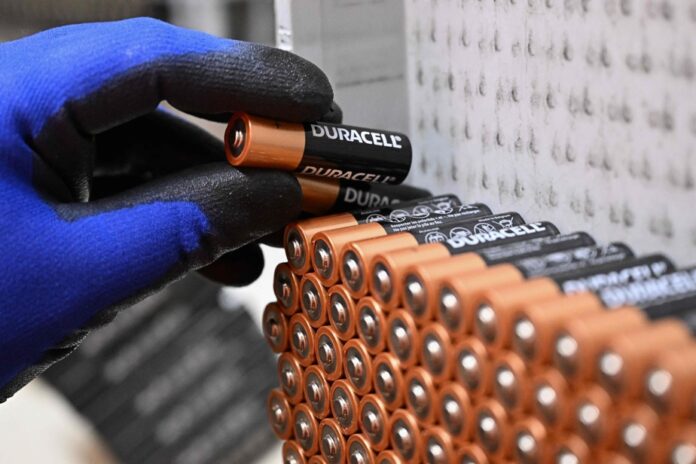(Aarschot) The immense European Duracell factory resonates with the toc-tac of compression and assembly machines: the end-of-year holidays are approaching, a prosperous season for the sale of batteries, this small venerable object which retains great ambitions .
Countless billions of units are sold each year around the world. For France alone, it was 515 million in 2022, according to NielsenIQ.
In Aarschot, east of Brussels, the American Duracell manufactures cylindrical alkaline batteries, the famous AA and AAA, intended for Europe and Africa: six million leave this eight-hectare factory every day.
Since the 1960s, the principle has remained roughly the same: a reaction in a small steel cylinder with a powder of zinc particles at its heart, explains Floris Hombroux, R manager.
“We convert chemical energy into electrical energy. The zinc gel donates the electrons. Here we reduce the zinc into particles, which allows the volume to be adapted to the design.”
Today this type of battery still represents the bulk of sales, but it is the more recent formats, the small so-called “button” batteries, which are boosting a rather sluggish market, notes NielsenIQ.
Thus in France, the market has declined again in mass distribution this year, in volume (-3.7%) and in value (-1.6%), according to the panelist, who observes “an underlying trend”.
Duracell, for its part, is seeing progress in its button batteries, manufactured in Asia “as close as possible to the sources” of lithium, it is explained. Rechargeable batteries are in decline (more expensive, not suitable for all uses, etc.), but the venerable cylindrical ones are resisting, insists Arnaud Soury-Lavergne, marketing director of Duracell France.
In Europe, the battery market is growing by 1 to 2% per year, all brands combined, he emphasizes (Duracell sharing the market with its compatriot Energizer, the German Varta and even distributor brands).
The manager talks about all these everyday objects that are increasingly energy-intensive, more connected, with more functionalities: toys, home automation, medical devices, etc. “The rate of equipment means that the volume (of batteries) continues to grow, we don’t see the AA and AAA go backwards,” he says. And “the latest storms in France have shown its importance”, when the electricity network fails.
But can the good old battery still evolve? And how can a brand differentiate itself on displays?
Duracell has decided to open its European factory to journalists this week, a rare event, we are assured. In Aarschot, the brand, which passed through numerous hands before being bought in 2016 by Warren Buffett’s conglomerate, Berkshire Hathaway, wants to show its strengths.
Here it has been manufacturing a new family of AA and AAA since 2020, which is intended to be more durable and powerful, thanks to “an ingredient” kept secret.
The production site, installed since 1967 and decorated with effigies of the famous pink rabbit, has also changed. “In 20 years, productivity has doubled,” explains its director, Jan Casteels.
Eight “high-speed lines” are operated by 400 employees (half as many as 20 years ago). Cameras control quality, batteries are cleaned by laser…
The halls follow one another, more or less noisy: the cathode hall, the anode hall, the components (caps, filaments), the production of chemicals (13 different depending on the batteries), then assembly. The process begins with the transformation of zinc ingots into particles, and ends with the hot application of the insulating label.
Duracell highlights its environmental commitment: 8,000 brand new solar panels, energy consumption of -20% in four years (LEDs, insulated roof, more efficient machines), packaging made only of cardboard, etc.
On the other hand, the brand does not have a life cycle analysis of its products or a carbon footprint. It is planned for next year, according to Arnaud Soury-Lavergne.
Duracell, which does not provide details of its revenues, does not indicate the origin of the metals it uses either.
On the other hand, we will learn that she now sees beyond alkaline. In a world that promises to be very electric, it offers battery systems in the United States to store current from solar panels. This offer should arrive in Europe soon.















